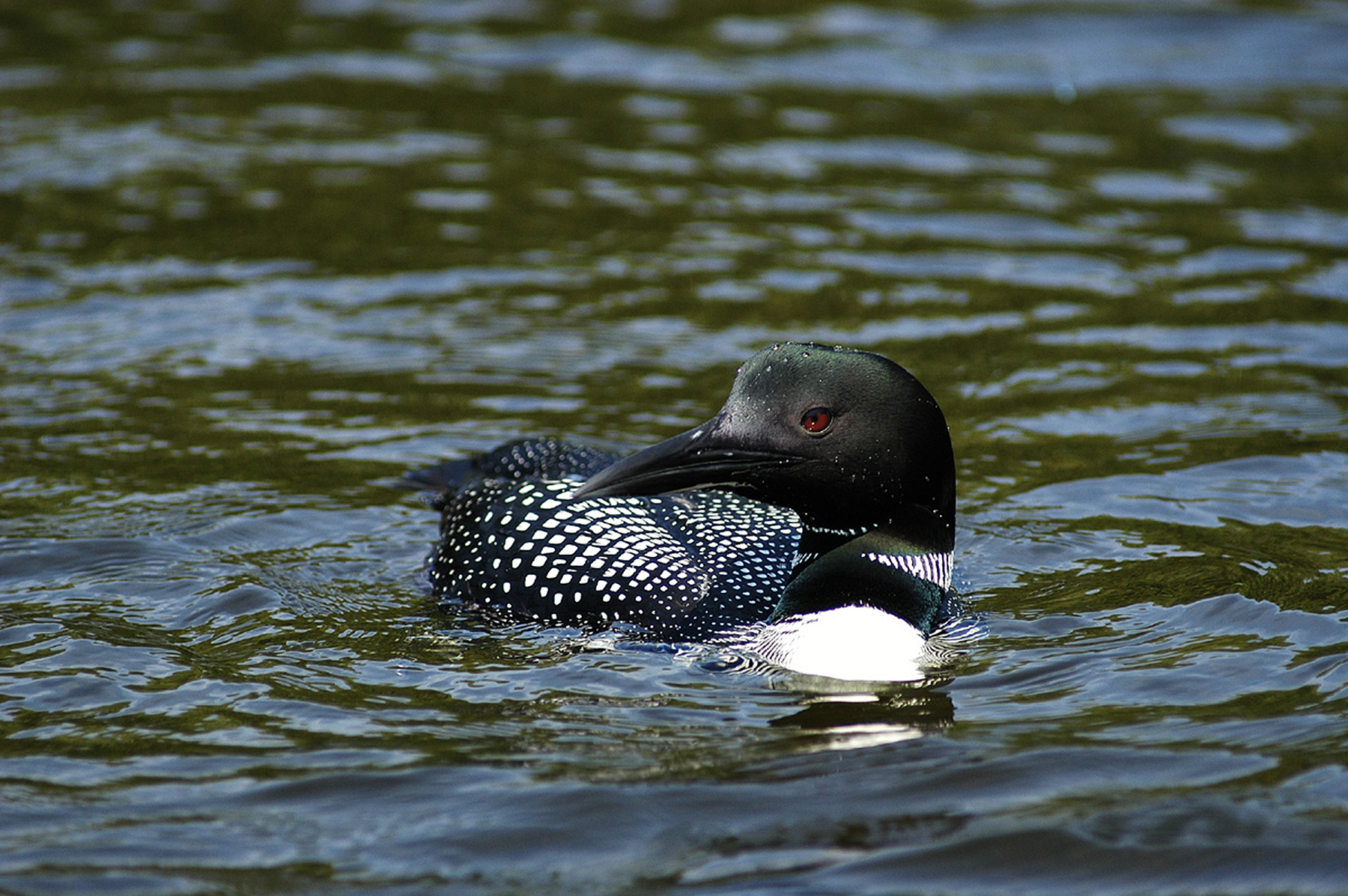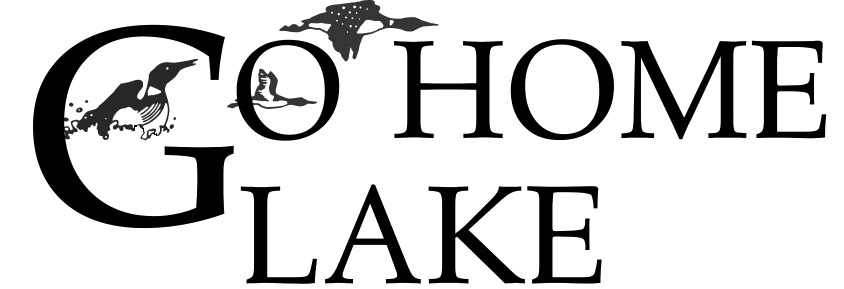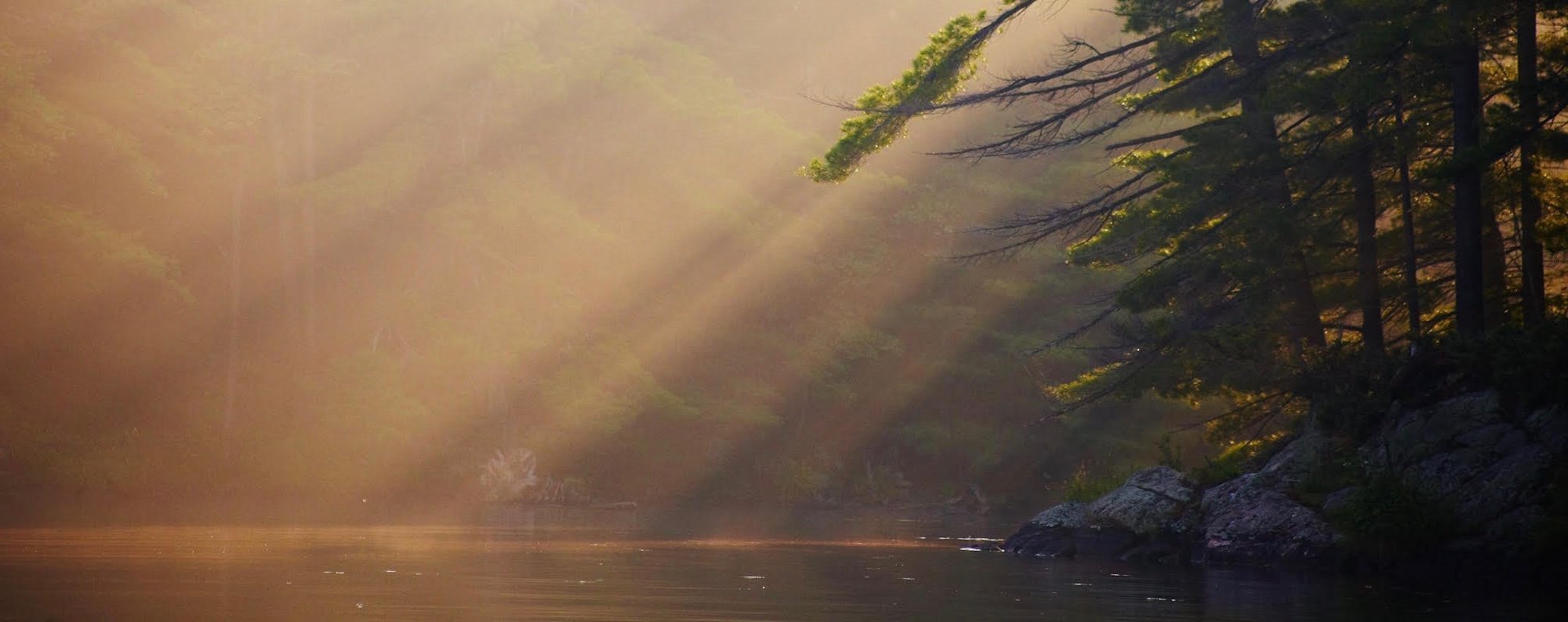Foul
Go Home Lake is also home to a number of different types of birds

Mallard Duck
The mallard is one of the most recognized of all ducks and is the ancestor of several domestic breeds. Its wide range has given rise to several distinct populations. The male mallard’s white neck-ring separates the green head from the chestnut-brown chest, contrasts with the gray sides, brownish back, black rump and black upper- and under-tail coverts. The speculum is violet-blue bordered by black and white, and the outer tail feathers are white. The bill is yellow to yellowish-green and the legs and feet are coral-red. Male utters a soft, rasping “kreep.” The female mallard is a mottled brownish color and has a violet speculum bordered by black and white. The crown of the head is dark brown with a dark brown stripe running through the eye. The remainder of the head is lighter brown than the upper body. The bill is orange splotched with brown, and the legs and feet are orange. Female is especially vocal with the characteristic series of quacks.

Loon
Loons, which are the size of a large duck or a small goose, resemble these birds in shape when swimming. Like ducks and geese, the loon’s toes are connected by webbing. Loons in flight resemble plump geese with seagulls’ wings that are relatively small in proportion to their bulky bodies.
Loons are excellent swimmers, using their feet to propel themselves above and under water. However, since their feet are located posteriorly on the body, loons have difficulty walking on land. Thus, loons avoid coming to land, except when nesting or severely injured.
Loons fly strongly, though they have high wing-loading (mass to wing area ratio), which complicates takeoff. Indeed, most species must run upwind across the water’s surface with wings flapping to generate sufficient lift to take flight. Once airborne, loons are capable of long flights during migration.
Photo by Bill Knudsen

Canada Goose
The black head and neck with a white “chinstrap” distinguish the Canada goose from all other goose species, with the exception of the cackling goose and barnacle goose (the latter, however, has a black breast and gray rather than brownish body plumage). The seven subspecies of this bird vary widely in size and plumage details, but all are recognizable as Canada geese. Some of the smaller races can be hard to distinguish from the cackling goose, which slightly overlap in mass. However, most subspecies of the cackling goose (exclusive of Richardson’s cackling goose, B. h. hutchinsii) are considerably smaller. The smallest cackling goose, B. h. minima, is scarcely larger than a mallard. In addition to the size difference, cackling geese also have a shorter neck and smaller bill, which can be useful when small Canada geese comingle with relatively large cackling geese. Of the “true geese” (i.e. the genera Anser or Branta), the Canada goose is on average the largest living species, although some other species that are geese in name, if not of close relation to these genera, are on average heavier such as the spur-winged goose and Cape Barren goose.

Wild Turkey
Adult wild turkeys have long reddish-yellow to grayish-green legs. The body feathers are generally blackish and dark, sometimes grey brown overall with a coppery sheen that becomes more complex in adult males. Adult males, called toms or gobblers, have a large, featherless, reddish head, red throat, and red wattles on the throat and neck. The head has fleshy growths called caruncles. Juvenile males are called jakes; the difference between an adult male and a juvenile is that the jake has a very short beard and his tail fan has longer feathers in the middle. The adult male’s tail fan feathers will be all the same length. When males are excited, a fleshy flap on the bill expands, and this, the wattles and the bare skin of the head and neck all become engorged with blood, almost concealing the eyes and bill. The long fleshy object over a male’s beak is called a snood. Each foot has three toes in front, with a shorter, rear-facing toe in back; males have a spur behind each of their lower legs


